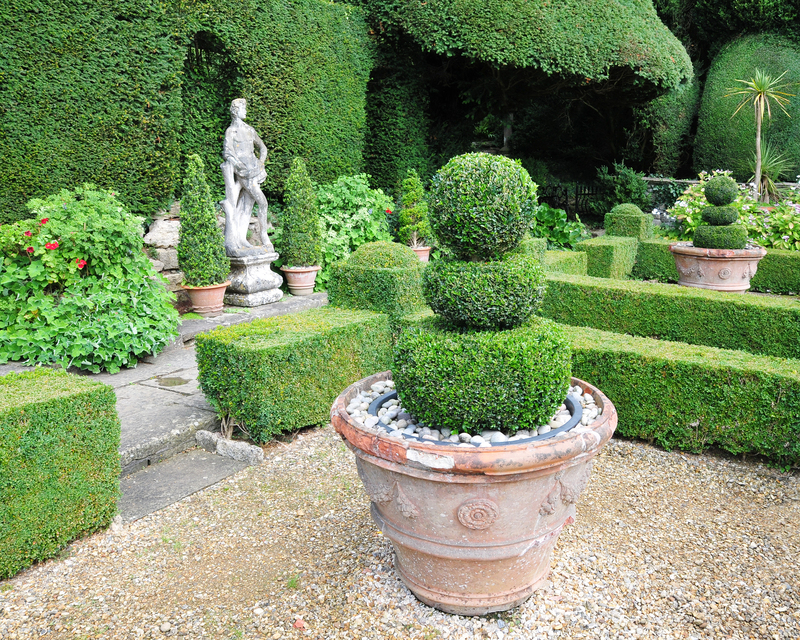Design a Garden That's Both Safe and Exciting for Kids
Posted on 17/06/2025
Design a Garden That's Both Safe and Exciting for Kids
Designing a kid-friendly garden requires careful planning, balancing the essential elements of safety, fun, and engagement for little ones. With the right approach, a garden can become a magical place for children to explore, learn, and play--all while remaining safe. In this comprehensive guide, we'll walk you through the vital steps to design a garden that's safe and exciting for kids, creating a vibrant outdoor oasis the whole family can enjoy.
Why Create a Child-Friendly Garden?
Outdoor spaces serve as valuable environments where children develop physical skills, curiosity, and a love for nature. By designing a garden with kids in mind, parents and guardians can:
- Encourage outdoor play and reduce screen time.
- Stimulate creativity and sensory experiences.
- Teach children about plants, animals, and the environment.
- Promote exercise and healthy habits.
- Create opportunities for family bonding in a natural setting.

Key Principles for a Safe and Exciting Kids' Garden
Before you begin, it's essential to outline some ground rules for creating a fun and safe garden for children:
- Prioritize safety in every aspect: Avoid sharp edges, toxic plants, and hazardous structures.
- Stimulate curiosity: Include diverse areas for exploration and discovery.
- Incorporate interactive elements: Features that kids can touch, move, and play with.
- Create age-appropriate zones: Tailor spaces for toddlers, preschoolers, and older children as needed.
- Design for supervision: Arrange the garden so that children can be easily watched from the house or a sitting area.
Step 1: Choose a Safe Location
Assess Your Garden's Layout
Start by examining your existing yard. Consider the proximity to roads, water sources, and driveways. The area dedicated to children's activities should be:
- Fenced and secure - Fence off the play area to prevent children from wandering off and keep out unwanted animals.
- Visible from common spaces - Ideally, the kids' zone should be seen from the kitchen or living room.
- Adequately shaded - Use natural or artificial shade to protect kids from excessive sun exposure.
- Free from obvious hazards such as open water, thorny plants, and stepping stones that might cause trips and falls.
Soil and Surface Safety
Soft, impact-absorbing surfaces reduce the risk of injury. Consider:
- Grass lawns for cushioned landings.
- Mulched paths made of bark or wood chips (ensure they're non-toxic and free of splinters).
- Rubber play mats for high-activity areas.
- Avoid concrete, gravel, or loose stones in play zones.
Step 2: Select Safe and Interesting Plants
Excite your kids' curiosity with a vivid palette of flowers and foliage, but always choose non-toxic plants for garden safety. Children love to touch, taste, and smell, making plant selection crucial when you design a garden for kids.
Plants to Avoid
- Oleander
- Daffodils
- Foxglove
- Lily of the valley
- Poison ivy, sumac, or oak
These can irritate skin or cause serious illness if ingested.
Kid-Friendly Plants to Include
- Sunflowers - Tall, cheerful, and safe; great for watching growth.
- Strawberries - Edible and fun to pick.
- Carrots - Easy to grow and fascinating to harvest.
- Nasturtiums - Edible flowers with a peppery taste.
- Snapdragons - Non-toxic, tactile, and colorful.
- Lavender - Pleasantly scented and good for sensory gardens.
Encourage Sensory Exploration
Include a variety of textures, fragrances, and colors. Sensory gardens stimulate children's senses and foster a deeper connection with nature. Add ornamental grasses for touch, fragrant herbs (like mint, thyme, and basil), and brightly colored annuals that attract bees and butterflies for a naturally vibrant experience.
Step 3: Design Interactive Play Zones
The most exciting gardens for kids have areas designed specifically for play and adventure. Mix open spaces for running with activity-rich nooks for exploration:
-
Sandpit or Mud Kitchen
- Stimulates creativity and messy play.
- Use untreated wood, rounded corners, and a cover to keep sand clean.
-
Miniature Vegetable Patch
- Designate a raised bed or section for kids to plant and harvest their own crops.
- Teaches responsibility, science, and patience.
-
Secret Hideaway
- Create a den with willow branches, a small teepee, or a bean tunnel.
- Encourages imaginative play and quiet time.
-
Nature Trail
- Laying out winding paths with stepping stones or wood cookies builds adventure.
- Line trails with interesting stones, logs, and bug hotels for discovery.
-
Water Play Zone
- Use shallow fountains or splash pads for fun during hot days.
- Always supervise closely and limit depth to a few centimeters.
Step 4: Ensure Safety in Hardscape and Structures
Fencing and Boundaries
Proper fencing is vital in safe garden design for kids. Ensure fences are:
- Sturdy and tall enough to keep kids in and animals out.
- Free of sharp points and splinters.
- Securely installed with latches out of children's reach.
Paths and Surfaces
- Non-slip surfaces help prevent falls, even when wet.
- Smooth edges on all paving, edging, and raised beds.
- Accessible paths wide enough for strollers or wheelchairs when necessary.
Play Equipment Safety
If including playhouses, slides, or swings:
- Choose sturdy, well-anchored equipment suited to your children's age group.
- Install pea gravel, rubber mulch, or soft grass below climbing frames and swings.
- Regularly inspect for wear, rust, or splinters.
Water Safety
- Cover water features with mesh when not in use, or install motion-activated alarms.
- Limit water depth and never leave children unsupervised around any water.
Step 5: Add Nature-Friendly Elements
Help your children discover the magic of wildlife by creating a garden that attracts birds, butterflies, and beneficial insects. Nature-friendly gardens inspire wonder and help develop respect for all living things.
- Bird Feeders and Bird Baths - Place them near windows so children can watch from indoors.
- Pollinator Plants - Lavender, sunflowers, and salvias attract bees and butterflies.
- Bug Hotels - Build or buy simple structures with wood, straw, and hollow stems to provide homes for insects.
- Log Piles - Decaying logs host beetles and fungi, adding biodiversity.
Step 6: Plan for Year-Round Fun
Children thrive on variety, and a garden designed for safe, year-round play will keep them interested in every season.
- Spring: Plant bulbs and sow seeds together.
- Summer: Enjoy water play, berry picking, and picnics.
- Autumn: Collect colorful leaves, harvest pumpkins, and build leaf piles.
- Winter: Decorate trees, feed birds, and look for animal tracks in frost or snow.
Step 7: Involve Children in the Garden Design
Empowering kids to have a say in the design of their garden sparks enthusiasm and helps form a sense of ownership and responsibility.
- Choose plants together - Let kids pick colors and edible crops.
- Let them help build - Painting planters, setting stepping stones, or assembling a bug hotel.
- Encourage creativity - Allow painting rocks, creating fairy gardens, or making wind chimes from recycled materials.
Additional Tips for a Safe and Exciting Garden for Children
- Store garden chemicals and tools safely - Use locked boxes or sheds.
- Teach children about garden safety - Explain which plants and areas are safe.
- Keep play areas tidy - Regularly clear up fallen branches, small toys, or garden debris.
- Sun safety - Provide hats, sunscreen, and plenty of drinking water during outdoor play.
Low Maintenance, High Enjoyment
While children's gardens are meant to be playful, parents appreciate designs that are easy to care for. Consider installing drip irrigation for raised beds, slow-growing and drought-resistant turf, and mulched borders to reduce weeding. Low-maintenance gardens free up more time for play!

Benefits of a Safe and Exciting Garden for Kids
- Promotes Physical Development - Climbing, digging, and running all encourage gross motor skills.
- Boosts Mental Well-being - Time spent outdoors reduces anxiety and improves mood.
- Enhances Learning and Curiosity - Children learn about cause and effect, responsibility, seasons, and nature cycles.
- Fosters Social Skills - Collaborative play and gardening with peers or family bond children together.
Conclusion: Craft Your Safe and Exciting Kids' Garden Today
When you design a garden that's both safe and exciting for kids, you lay the groundwork for years of creativity, learning, and joyful play. By combining imaginative areas with solid safety practices, your child-friendly garden will become a cherished family space--encouraging healthy habits and fostering a life-long connection with the outdoors.
Ready to start your own kid-safe and interactive garden? Begin with your favorite ideas from this guide, personalize for your available space and children's interests, and watch as your garden becomes their favorite place to grow!



